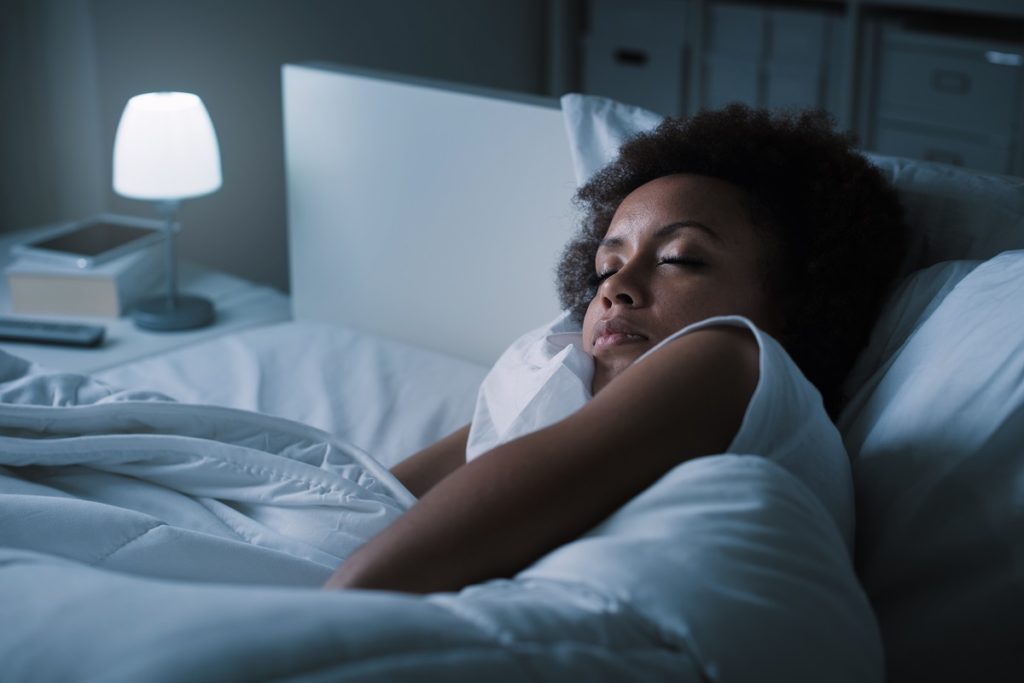
By Suvarna Palla, MD, neurologist at The Portland Clinic.
Tired of long, exhausting nights struggling to fall asleep or to stay asleep through the night? One solution may surprise you: spend less time in bed.
We are wired to believe that if we spend more time in bed, we’ll get more sleep. But for people with insomnia, those extra hours often drag by in miserable, frustrated wakefulness. The sleep diaries of my patients often reveal that they spend 10 or 11 hours in bed, of which one or two are spent reading or watching TV, but only four or five hours actually sleeping. Reducing time in bed, through a technique called “sleep restriction,” is one of the most successful treatments I’ve seen for the challenge of insomnia.
And insomnia is definitely a challenge. In the 10 years since The Portland Clinic Sleep Center opened, we’ve seen a dramatic rise in the number of people seeking help for insomnia. Today, it’s one of the top two problems we treat (the other is sleep apnea). It affects an estimated 20-30% of people, especially postmenopausal women and people over 65. If you are one of them, rest assured: insomnia is treatable.
How sleep restriction works
Sleep restriction is a type of cognitive behavioral therapy for insomnia (CBT-I), a treatment approach that focuses on changing the thought patterns and behaviors that interfere with sleep. CBT-I requires more effort than taking a pill, but studies show that it’s more effective than medication, and its effects are long-lasting.
To start, keep a sleep diary, noting your bedtime, what time you fall asleep, and all awakenings. (Your written records are more accurate than sleep-tracking apps — download a sleep log here.) After a week, calculate your average nightly sleep time and, for the next week, restrict your time in bed each night to that number of hours.
For example, if you’ve been sleeping only six of your nine hours in bed, restrict yourself to six hours in bed each night for a week. It may sound drastic — if you need to get up at 7 a.m., that means going to bed at 1 a.m. — but most people start sleeping better quickly as their sleep drive, or sleepiness, increases. If you’re able to sleep for at least 85% of the time that you’re in bed for a full week, but you feel like you need more sleep, then go to bed 15-30 minutes earlier the next week. Keep adjusting your bedtime weekly, while keeping a fixed wake-up time, until you’re sleeping most of the night and waking up refreshed.
Calm your racing mind
Relaxation techniques are another important component of CBT-I. They work to calm the racing thoughts and worries that keep you awake. Yoga, meditation, progressive muscle relaxation and slow, deep breathing are all excellent techniques to quiet an overactive mind. Sleep and meditation apps are very popular — one, called Calm, has been downloaded more than 52 million times.
Ironically, stressing about not sleeping may be one of the biggest worries keeping you awake. Working with a therapist who specializes in CBT-I, or using an app such as CBT-i Coach, can help you replace negative thoughts (Will I ever get to sleep? How will I function tomorrow?) with more realistic, calming thoughts (It’s just one night. I’ve gotten through this before. It will be OK.).
Good sleep hygiene is a must
Good sleep hygiene has to be in place for other treatments to work. This means taking a critical look at your sleep habits and cleaning up anything that could be sabotaging your sleep. Is your room too light? Too warm? Is your wake-up time consistent? (Sorry — sleeping in on weekends won’t help you.) Review the basics and see if you’ve been missing anything.
It’s important to rule out other sleep disorders and medical conditions that could be causing your insomnia. Beyond that, most patients who commit to these techniques come back and tell us they’re sleeping much better.
Learn more about insomnia and sleep disorders at sleepfoundation.org.


